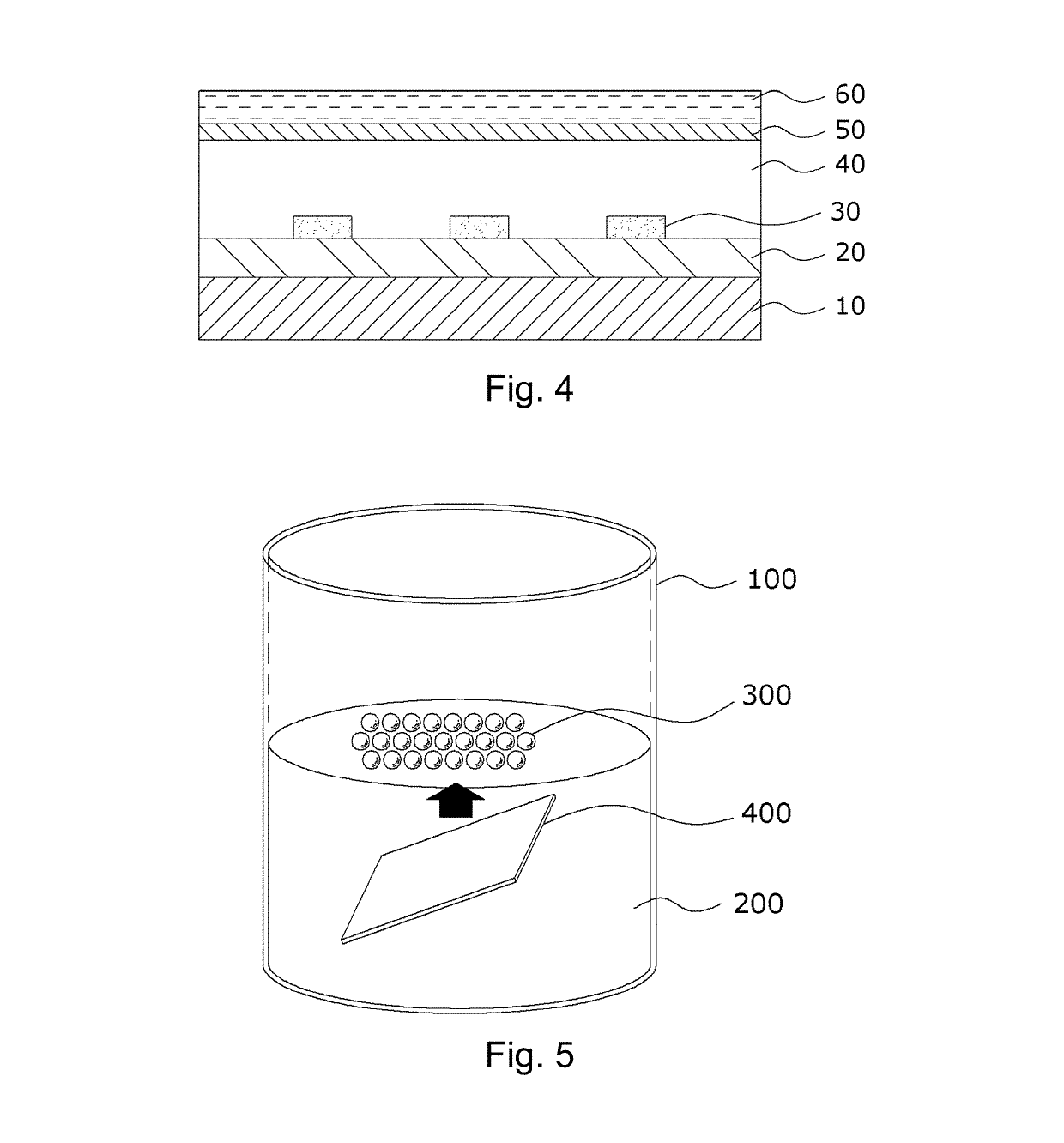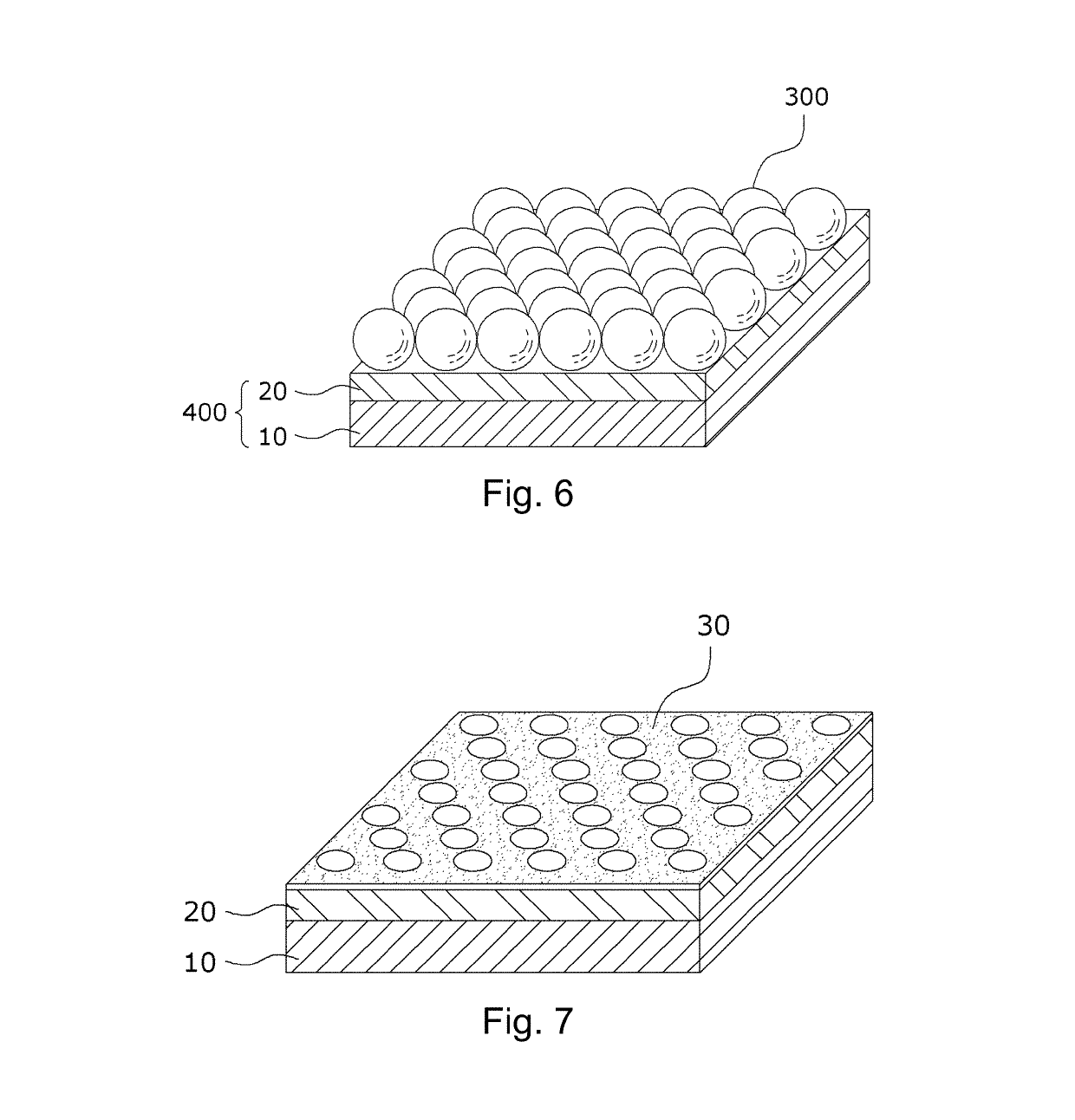Method of manufacturing cigs-based solar cell and cigs-based solar cell
a solar cell and cigs technology, applied in the field of manufacturing a cigs-based solar cell, can solve the problems of reducing the increasing the importance of the development of next-generation clean energy sources, and rapidly increasing the cost of silicon, so as to reduce the amount of ga2o3 formed and maintain the effect of photoelectric conversion efficiency of the solar cell
- Summary
- Abstract
- Description
- Claims
- Application Information
AI Technical Summary
Benefits of technology
Problems solved by technology
Method used
Image
Examples
Embodiment Construction
[0029]A detailed description will be given of embodiments of the present invention, with reference to the appended drawings.
[0030]The structure and the manufacture of a double-sided transmission CIGS solar cell of the present invention will be described using the embodiments below.
[0031]FIGS. 1 to 4 are views showing a process for manufacturing the double-sided transmission CIGS solar cell according to the embodiment of the present invention.
[0032]In the present embodiment, first, a rear electrode layer 20 including a TCO material is formed on the surface of a transparent substrate 10.
[0033]Representative examples of the transparent substrate 10 may include a glass substrate including a soda lime glass material but are not limited thereto, and various transparent materials may be applied to the substrate.
[0034]The rear electrode layer 20 includes a transparent TCO (transparent conducting oxide) material so that light is transmitted through a lower part thereof, unlike the related ar...
PUM
 Login to View More
Login to View More Abstract
Description
Claims
Application Information
 Login to View More
Login to View More - R&D
- Intellectual Property
- Life Sciences
- Materials
- Tech Scout
- Unparalleled Data Quality
- Higher Quality Content
- 60% Fewer Hallucinations
Browse by: Latest US Patents, China's latest patents, Technical Efficacy Thesaurus, Application Domain, Technology Topic, Popular Technical Reports.
© 2025 PatSnap. All rights reserved.Legal|Privacy policy|Modern Slavery Act Transparency Statement|Sitemap|About US| Contact US: help@patsnap.com



